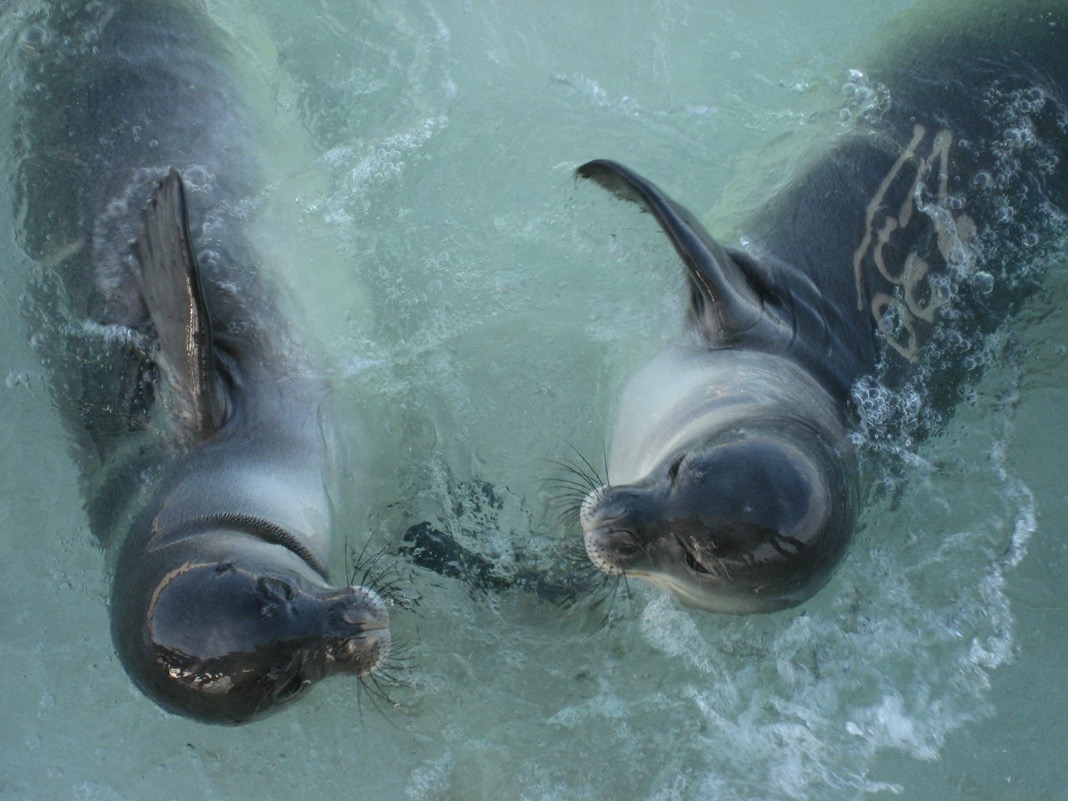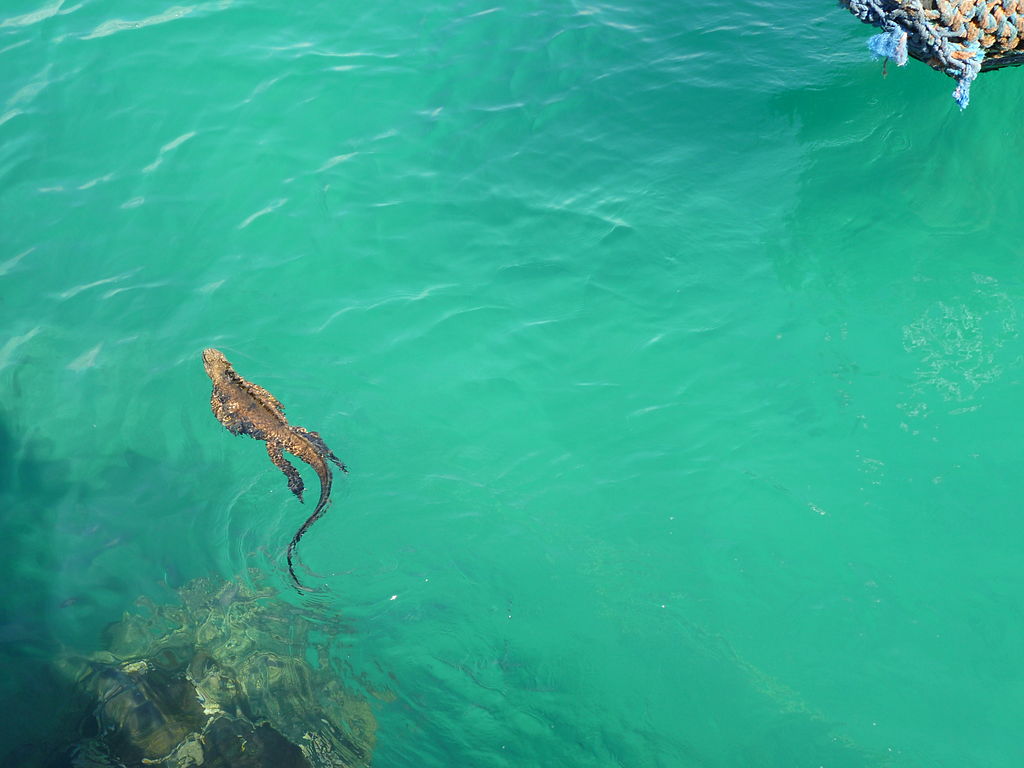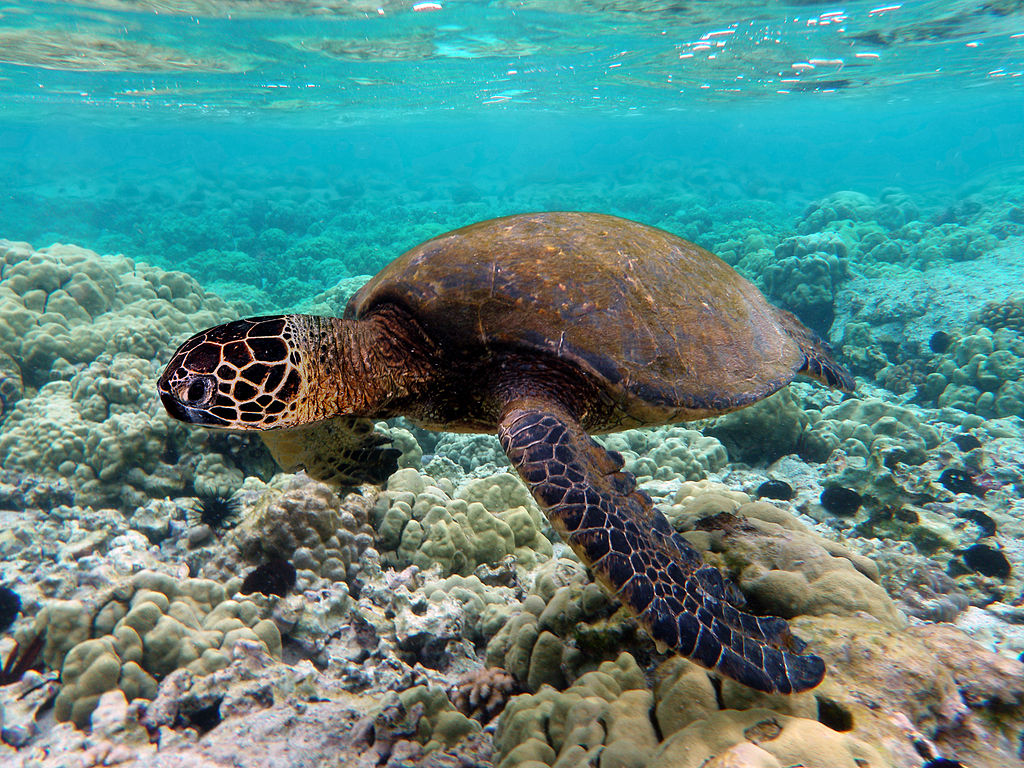21 Marine Sanctuaries That Are a Step in the Right Direction

Sea Shepherd Founder Captain Paul Watson lists 21 marine sanctuaries in the world that have been promised protection by world governments and non-profits. He also urges the outfits to take prompt action to protect our oceans.
The Tides Are Changing, The Currents are Shifting
By Captain Paul Watson
The announcement this week at the Oceans Conference in Washington D.C. by Leonardo DiCaprio that the technology is available to locate illegal fishing operations at sea is most welcome.
https://youtu.be/ITnb6-yWsu0
Also welcome, is all the announcements and promises by more than a score of nations and NGO’s of commitments to protect marine eco-systems.
Sea Shepherd applauds all these parties for the following announcements this last week.
- The United States announced the expansion of the Papahānaumokuākea Marine National Monument off the coast of Hawaii to cover an additional 1,146,798 square km, creating the world’s largest marine protected area and permanently protecting pristine coral reefs, deep sea marine habitats, and important ecological resources.
- The United States also announced the establishment of a new marine monument of 12,725 square km covering New England Canyons and Seamounts.
- The Seychelles announced that it will establish up to 400,000 square km of marine protected area (30 percent of its EEZ) by 2020 as part of a comprehensive marine spatial plan for its entire EEZ via a debt swap of up to $27 million with its Paris Club creditors and the Government of South Africa, with the support of the Nature Conservancy and private capital investors interested in marine conservation.
- The United Kingdom announced the designation of a sustainable use marine protected area throughout whole of St. Helena's 445,000 square km maritime zone and the final establishment of the marine protected area around the Pitcairn Islands that it proposed in 2014, which permanently closes more than 99 percent of the 840,000 square km maritime zone around the Islands – 40,000 square km more than originally planned.

- The United Kingdom also announced a roadmap to determine the exact location of an evidence-based fully protected marine protected area around Ascension Island covering at least 220,000 square km by 2019 and a commitment to establish a regime for protecting the waters across the entire 750,000 square km Exclusive Economic Zone in Tristan da Cunha by 2020. In total, this amounts to 1,455,000 square km in new MPA commitments. The United Kingdom furthermore pledged more than $22 million (EUR 20 million) over the next four years to support the implementation, management, surveillance, and enforcement of these new marine protected areas.
- The Federated States of Micronesia announced its commitment to expand out to 24 nautical miles around each island its marine protected area that prohibits commercial fishing, therein protecting an additional 184,948 square km of its ocean waters. Canada reaffirmed its commitment to meet marine conservation targets, including the commitment to protect 5% of Canada’s marine and coastal areas by 2017 and 10% by 2020. Contributing towards this goal and building on previous actions, Canada announced plans to protect sensitive benthic ecosystems in the Gulf of Maine through fisheries closures in Jordan Basin and in Corsair and Georges Canyons, amounting to a total area of over 9,000 square km on Canada’s Atlantic Coast. These new protection measures in the Atlantic join the soon to be established Anguniaqvia Niqiqyuam Marine Protected Area in Canada’s western Arctic and the Hecate Strait/Queen Charlotte Sound Marine Protected Area, on Canada’s Pacific coast. The protection of these marine areas on Canada’s three coasts, combined with Canada’s plans for a National Marine Conservation Area in Lancaster Sound in Canada’s Arctic, will total over 58,121 square km of new marine protection by 2017 for Canada and the world’s oceans.
- Ecuador announced the creation of a no-take marine sanctuary in the Galápagos Islands Marine Reserve, which prohibits fishing in an additional 40,000 square km around the northern Galápagos islands of Darwin and Wolf. The marine sanctuary will protect the area with the largest concentration of sharks on the planet.

- Cambodia announced the establishment of its first marine protected area, which covers 405 square km in the waters of the Koh Rong Archipelago.
- Palau announced the final establishment of the National Marine Sanctuary it proposed in 2014. The Sanctuary, which encompasses Palau’s entire EEZ, prohibits all extractive activities, including foreign fishing and mining in 80% of the area, and the remaining 20% of the sanctuary will be developed into a domestic-only fishing zone to ensure food security for Palauans.
- Colombia announced that it will quadruple the size of the Malpelo Flora and Fauna Sanctuary, which hosts one of the world's largest aggregations of sharks, so that it will cover an additional 20,237 square km. Malaysia announced the establishment of the 10,000 square km Tun Mustapha Park marine protected area and a project to build Park enforcement capacity with $250,000 from the United States and $50,000 from WildAid.
- Costa Rica announced that it will expand the protected waters of the Cocos Island National Park by almost 10,000 square km, which will nearly quadruple this area in an effort to safeguard white-tip sharks, whale sharks, and hammerhead sharks, among others. Malta announced the designation of nine new marine protected areas comprising roughly 3,450 square km, covering an area significantly larger than the country itself (316 square km).
- Sri Lanka announced the 292 square km Veduthalathiv Nature Reserve marine protected area, as well as nearly 800 square km in four new marine protected areas of habitat for marine mammals, coral, migratory and shore birds, and other marine life: the Mirissa and Kayankanni MPAs, part of the Gulf of Mannar, and the Jaffna Lagoon Sanctuary. Sri Lanka will set aside an additional 86.05 square km of Associated Marine Protected Areas in lands bound by marine ecosystems: the Nai Aru lagoon and Nandikadal sanctuaries.
- Korea announced the designation of the 91.2 square km Garorim Bay, one of the only two habitats for endangered spotted seals in Korea and important spawning ground for many species of fish, as its 25th marine protected area, achieving progress on its commitment to increase the number of MPAs to 32 by 2020.
- Thailand announced a 10 square km pilot protected area for dolphins in Trat Bay, with expansion potential for the entire Trat Bay of 880 square km, and enhanced protection for dugongs and their habitats, including opening a marine mammal rescue center in Phuket in 2017 and establishing a 400 square km dugong protected areas in Trang province by 2020.
- Morocco announced the creation of three marine protected areas, in Moghador, Massa, and Albora, covering 775 square km on the Moroccan Atlantic and Mediterranean shores as well as plans for a fourth in M’diq along the Mediterranean by 2018 where trawling will be banned.

- Norway announced three new marine protected areas, totalling 170 square km, to protect an inshore coral reef, an estuary, and a rich and diverse open coastal area in the counties Rogaland and Sør-Trøndelag, and ten additional marine protected areas to protect cold water corals.
- Lebanon announced its intent to establish a 30 square km marine protected area in Naqoura and Ras ech Chaqaa. Kuwait announced marine protected areas around Garouh, Kubar Island, and Um-Al-Maradim Islands covering 0.158 square km to protect beaches, shoals, coral reefs, and other marine life.
- Monaco announced that it has provided approximately $563,000 (EUR 500,000) to start a newly created trust fund set up with France and Tunisia that will provide long-term financial support to marine protected areas (MPAs) designated by Mediterranean countries; this fund will enhance existing MPAs, encourage the creation of additional MPAs, foster capacity-building, and complement existing initiatives.
- Australia announced that it will provide an additional $41.95 million (AUD $56.1 million) over four years to strengthen the management of its marine protected areas, the largest representative network of marine protected areas in the world. This funding will develop modern approaches to management and support research to better understand the ecological, social, and economic values of Australia’s marine reserves.
- Sri Lanka announced that it will establish a sea turtle conservation complex at Dodanduwa in the Southern province to treat and provide a sanctuary for injured turtles and educate the local community, to be completed this year.
- France announced the expansion of the marine reserve in the French Southern Lands in the Indian Ocean by 550,000 square km, as well as its commitment to create a marine protected area around Clipperton Island. France also committed to a target of protecting 75% of its coral reefs by 2021.
These are wonderful and welcome developments but there is one thing that has not been properly addressed.
It is one thing to declare large areas of the Ocean protected and it is quite another thing to actually protect these areas.
There is simply a lack of political and economic motivation to actually make good on many of these promises.
The Marine Sanctuary already in place in the Galapagos has failed to stop the taking of some 300,000 sharks each year or to curb the rising catches in local waters to feed ever increasing numbers of eco-tourists.
Costa Rica’s Cocos Island has been a sanctuary for decades but the poorly equipped rangers on the island do not have the resources to defend the areas already designated as protected.
Sea Shepherd has reported the locations of illegal fishing operations for decades without any response from regulatory agencies until recently, and that only in response to us making a great deal of noise with high seas chases and confrontations.
Indonesia and Chile have been taking action with the destruction of illegal fishing boats but most everywhere else on the high seas, the poachers plunder the sea with impunity reaping billions of dollars in illicit profits.
Sea Shepherd’s efforts to stop illegal fishing have been successful despite a lack of funds and support although I do appreciate and acknowledge the cooperative support of Mexico, Gabon, Ecuador, Italy Sao Tome Principe and Indonesia.
We also acknowledge the recent actions and cooperation of Interpol.
And yes things are being done, but not enough, not nearly enough and not fast enough.
Our Ocean is dying. Fish have been diminished by 90%. The seas are becoming increasingly more polluted with chemicals, plastic, oil, radiation, not to mention the impact from climate change. Marine mammals and birds are starving.
https://youtu.be/R6l3M9yCvmg
These announcements and these commitments are wonderful and are certainly a huge improvement on the way things have been over the last generation. It demonstrates a rising concern and we don’t want to diminish the importance of these commitments.
We just need to understand that these commitments are not complete solutions. More must be done and sooner, much sooner.
Finding illegal and unregulated fishing operations is not that difficult and all the more easier with the technology announced by Mr. DiCaprio.
However the key is enforcement and that means patrols, deterrent sentences and an end to corruption that allows these illegal operations to survive.
We have seen and experienced this corruption first hand and it goes to the highest levels in many countries.
Sea Shepherd was not at the meeting in Washington D.C. – it was not a meeting for pirates I was told which is understandable. Besides we’re not big fans of meetings.
We don’t need meetings, we need action. We have ships. We have volunteers and most importantly we have the courage, the imagination and the passion to make a difference.
For the coming year Sea Shepherd will continue to intervene against illegal activities around the planet with ships and crew in the Atlantic, the Mediterranean, the Pacific and the Southern and Indian Ocean.
https://youtu.be/EwhpDx-lMRM
Next year will be the 40th year since I established Sea Shepherd as an anti-poaching organization.
We do what we do with the resources we have available within the boundaries of the law and practicality.
Our tactics may sometimes be controversial but these tactics have proven to have been successful. We get results without causing injury. We shut down illegal activities and we save lives as we protect the integrity of marine sanctuaries around the globe.
We have no problem with being controversial. I like to call ourselves the ‘ladies of the night’ of the marine conservation movement. Many people may agree with us and what we do secretly but would rather not be seen with us in the light of day. And that is okay because the strength of a movement, just like an eco-system lies in diversity.
However more and more outspoken support comes our way with each passing year as people see our predictions unfolding and they see the results of our interventions.
Last year, U.S. Secretary of State John Kerry and Interpol praised Sea Shepherd actions in shutting down Southern Ocean Toothfish poachers.
Encouragement and support has also come from the governments of Ecuador, Gabon, Indonesia and from the Navy and police in Italy, Honduras, and France and from the President of Mexico.
At this moment over a hundred Sea Shepherd volunteers are at sea on nine different ships. Many other Sea Shepherd volunteers are in Costa Rica, Honduras, Florida, Japan and the Danish Faroe Islands.
After forty years without causing a single injury to any person our tactics of aggressive non-violent intervention have proven effective.
Sea Shepherd is a growing global movement and we are thankful to the nations that attended this meeting in Washington for expanding the protective areas thus allowing us some extra degree of authority in stopping the criminals who continue to exploit the Ocean without respect for the laws of nature or the laws of humanity.
The bottom line is: If the Ocean dies, we all die!
Feature Image: Marine reef in Koh Tao, Thailand/ Image © Meesha Holley





Comments ()